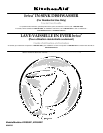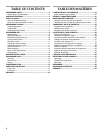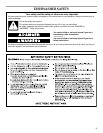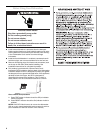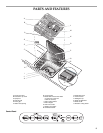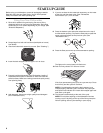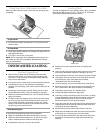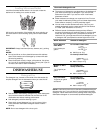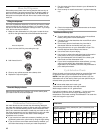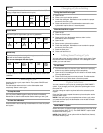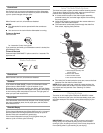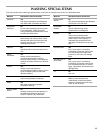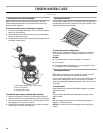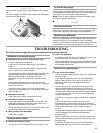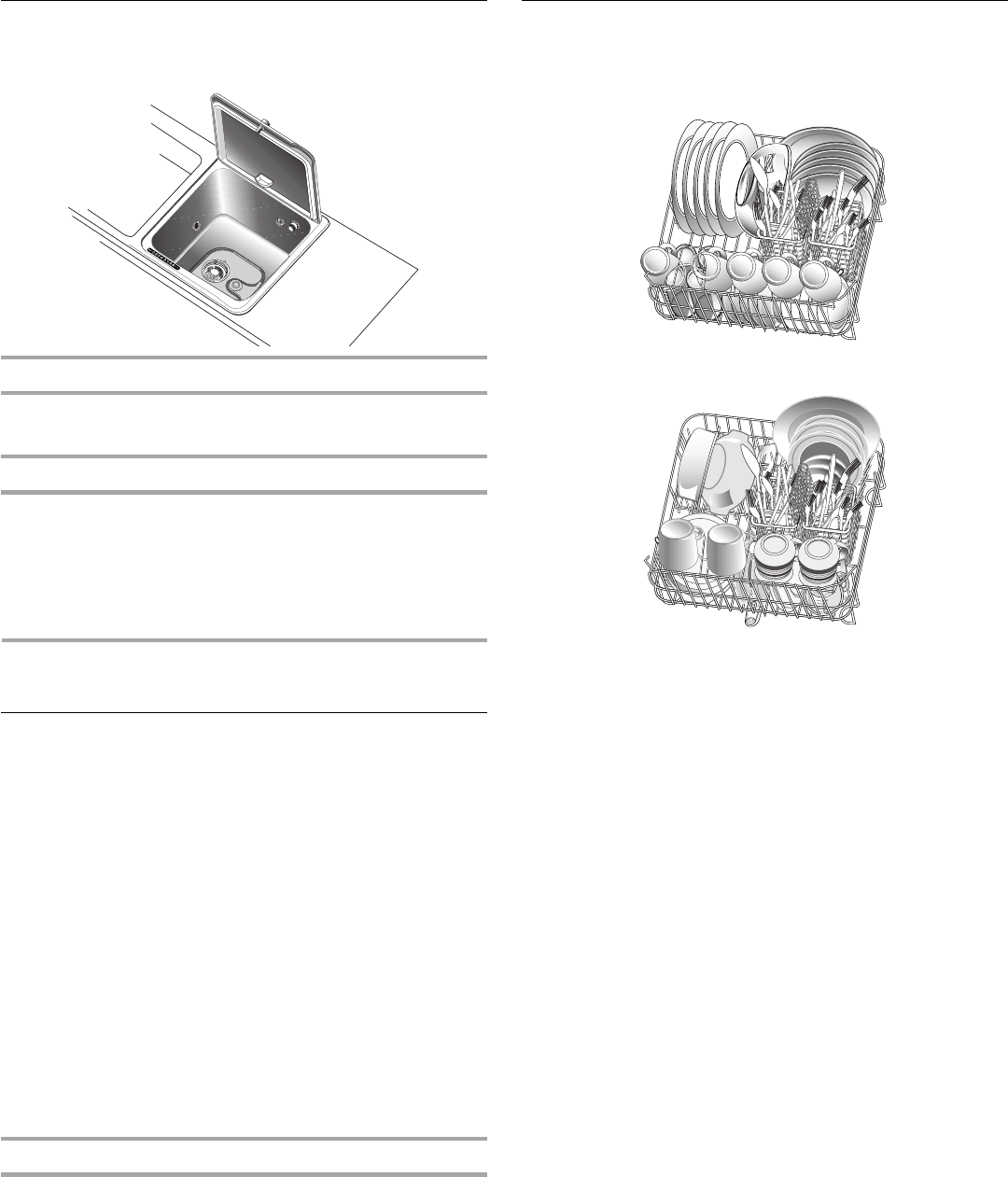
7
Using Your New Dishwasher As a Sink
When you need more sink area, remove the rack and spray arm
completely.
To open drain
1. Turn the drain stopper assembly left ¼ turn and lift to allow
water to drain.
To close drain
1. Insert drain stopper assembly so it aligns and drops down to
seal against the drain.
2. Turn right ¼ turn to lock it into place.
NOTE: Do not completely fill the dishwasher when using it as a
sink. Make sure the sink is completely drained before using it
again as a dishwasher.
DISHWASHER LOADING
Loading Suggestions
■ Remove leftover food, bones, toothpicks and other hard
items from the dishes. To conserve water and energy and
save time it is not necessary to rinse dishes before putting
them into the dishwasher.
■ It is important for the water spray to reach all soiled surfaces.
■ Load dishes so they are not stacked or overlapping if
possible. For best drying, water must be able to drain from all
surfaces.
■ Load heavy pots and pans carefully. Heavy items can dent
the stainless steel interior if they are dropped or bumped.
■ Make sure pot lids and handles, etc., do not interfere with the
spray arm rotation.
■ Conserve water and energy and save time over hand rinsing
by running a rinse cycle to keep dishes moist if you do not
plan to wash them soon. Foods such as eggs, rice, pasta,
spinach, and cooked cereals may be hard to remove if they
are left to dry over a period of time.
Quiet operating tips
To avoid thumping/clattering noises during operation:
■ Make sure lightweight load items are secured in the rack.
■ Make sure pot lids and handles, etc., do not touch interior
walls or interfere with the rotation of the spray arm.
■ Load dishes so they do not touch one another.
Loading Rack
The rack is designed for cups, glasses, plates, pans, casseroles.
and utensils. Many items, up to 11" (27.94 cm), fit in the rack.
(See recommended loading patterns shown.)
■ Place items so open ends face down for cleaning and
draining.
■ China, crystal, and other delicate items must not touch each
other during dishwasher operation. Damage may occur.
■ Load small items in the rack only if they are secured in place.
■ Load plastic items so the force of the spray does not move
them during the cycle. Only plastic items marked
“dishwasher safe” are recommended.
■ To avoid chipping, do not let stemware touch other items.
■ Small bowls, pans, and other utensils can be placed in the
rack. Load bowls in the center section for best stability.
■ Load plates, soup bowls, etc., between tines.
■ Overlap the edges of plates for large loads.
■ Load soup, cereal, and serving bowls in the rack in a variety
of ways depending upon their size and shape. Load bowls
securely between the rows of tines. Do not nest bowls
because the spray will not reach all surfaces.
■ Load cake pans and other large items at the sides and front.
Loading such items in back can keep the water spray from
reaching the Rinse Aid dispenser.
■ Secure heavily soiled cookware face down in the rack.
■ Make sure pot handles and other items do not stop rotation
of the spray arm. The spray arm must move freely.
■ Do not load items between the rack and the left side of the
dishwasher tub because they might block the water inlet
opening.
5 place setting
Mixed Load



